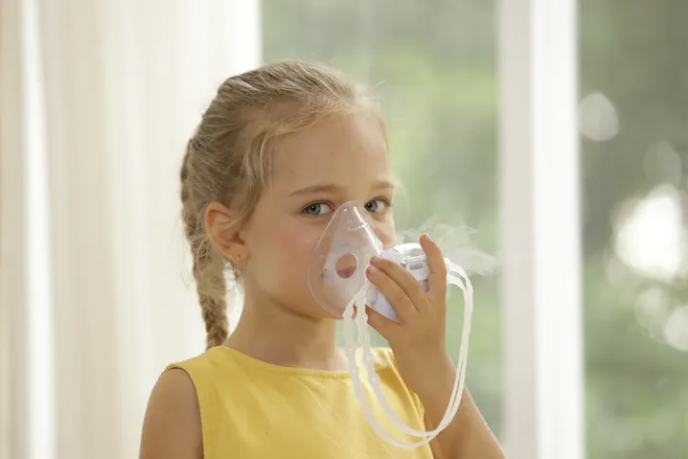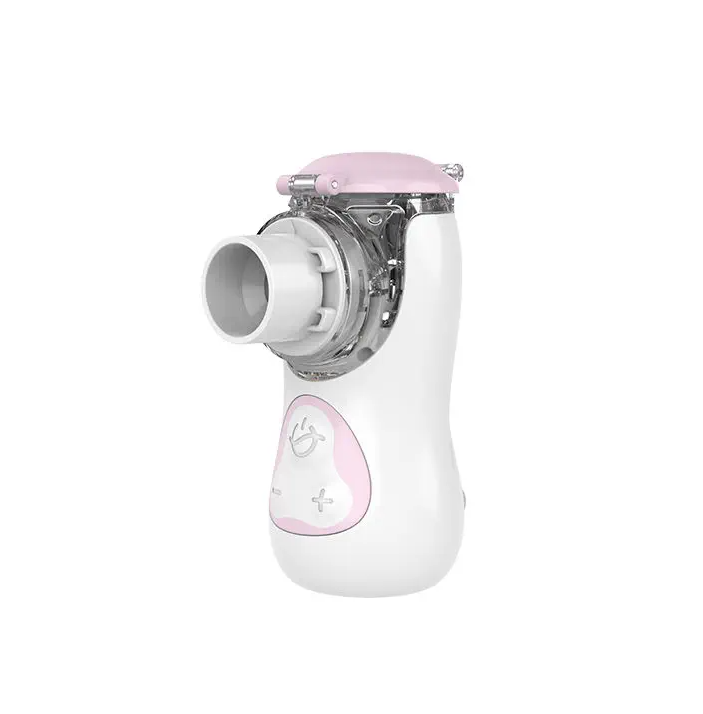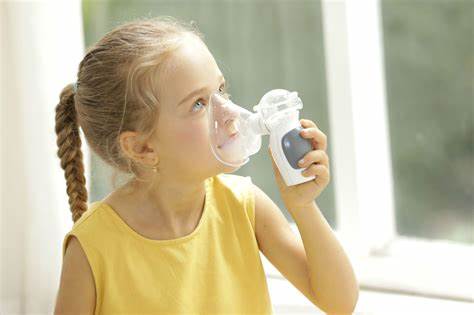Nebulized inhalation is a direct drug delivery method using the respiratory tract and lungs as the target organs, and has become a key means of treating respiratory-related diseases with its advantages of rapid onset of action, high local drug concentration, lower dosage, convenient application and fewer systemic adverse effects. However, unregulated use of nebulized inhalation therapy may not only directly impair the therapeutic effect, but also cause safety hazards, posing a threat to the life and health of patients.
Nebulized inhalation therapy uses a nebulized inhalation device to convert medication into aerosol particles with diameters ranging from 0.01 to 10 μm, which are inhaled and deposited in the airways and lungs to exert therapeutic effects. The diameter of the nebulized particles directly affects where the drug is deposited in the body, and effective nebulized particles should have a diameter between 0.5 and 10 μm. The effective nebulized particles should be between 0.5 and 10 μm in diameter. 5 to 10 μm diameter particles are mainly deposited in the oropharynx, 3 to less than 5 μm particles are mainly deposited in the lungs, and 50% to 60% of particles less than 3 μm are deposited in the alveoli.

Physicochemical properties of nebulized inhaled drugs
The widespread use of nebulized inhalation drugs has made them a key therapeutic tool for respiratory-related diseases. The therapeutic effect of this treatment is mainly due to its unique physicochemical properties, which optimize the action of the drug in the body.
Ideally, aerosolized inhaled drugs exhibit 'two short and one long' properties in vivo, which means that the drug has a shorter residence time at the surface of the airway mucosa, a relatively shorter plasma half-life, and a longer retention time in the local tissues. This characteristic helps to exert the therapeutic effect rapidly in a short period of time, reduce the occurrence of systemic side effects, and maintain the drug concentration in local tissues for a longer period of time to achieve a more lasting therapeutic effect.
In practice, inhaled glucocorticosteroids (ICS) are widely used for the treatment of COPD and asthma, short-acting β2 agonists (SABA) are used for the rapid relief of acute symptoms, short-acting cholinergic M-receptor antagonists (SAMA) inhibit mucus secretion from airway glands by blocking the cholinergic M-receptor and relaxing airway smooth muscle, diastolizing bronchioles, and mucolytics can inhibit mucus secretion from the airway glands by decreasing the phlegm's viscosity to increase sputum expulsion, thus making it easier to cough up.
Medication monitoring in special populations
First of all, the use of nebulized inhalation preparations in elderly patients requires comprehensive consideration of various factors to ensure the effectiveness and safety of medication. For the elderly population, medication compliance and accuracy are key, so measures need to be taken to improve patients' understanding of and cooperation with nebulized inhalation therapy. When applying inhaled glucocorticoids (ICS), particular attention needs to be paid to the risk of pneumonia in the elderly population. Different types of ICS may have different risks of developing pneumonia, so careful consideration needs to be given to their selection and use to ensure that elderly patients are able to maintain good respiratory hygiene during treatment.

For elderly patients with cardiac disease, the principle of inhalation on demand should be followed when nebulizing short-acting beta2 agonists (SABA). Overuse of SABA may lead to arrhythmias or aggravate symptoms of coronary artery disease, so patient response needs to be closely monitored to avoid unnecessary risks when administering the drug. In addition, the use of nebulized inhaled short-acting choline M receptor antagonist (SAMA) should be used more cautiously in elderly patients with prostatic hyperplasia or bladder cancer neck obstruction. The overall health of the patient needs to be taken into account when developing a treatment plan to avoid possible adverse effects and complications.
Second, when using nebulized inhalation formulations in pediatric patients, special attention needs to be paid to the safety and efficacy of the medication. Budesonide Suspension is currently approved by the U.S. Food and Drug Administration (FDA) as a nebulized dosage form of ICS for use only in children under 4 years of age. Dosage adjustments should be made as needed for nebulized inhalation therapy in children. To improve therapeutic efficacy, the use of a mask inhaler is recommended for younger children, especially if a closed mask is selected. The treatment should preferably be carried out in a quiet state to ensure the relaxation and comfort of the child.
During treatment, the vital signs of the pediatric patient need to be closely monitored. If symptoms such as frequent coughing, shortness of breath, and airway spasm occur, nebulization treatment should be immediately suspended and observed. After the symptoms are relieved, the suitability of continuing the treatment needs to be assessed. For children who need long-term nebulization therapy, regular follow-up should be conducted to assess the effectiveness of the treatment. Parents should not stop the medication on their own because their child is showing improvement; adjustments need to be made on the advice of the doctor.

Finally, women need special care when using nebulized inhalation preparations during pregnancy and lactation. According to clinical guidelines issued by the NAEPP Expert Panel and ACOG, for those pregnant and breastfeeding women with persistent asthma, the preferred medications for controlling airway inflammation are ICSs, with budesonide having an FDA pregnancy classification of B, and beclomethasone propionate and fluticasone propionate having a C classification. The results of the Swedish Birth Registration Center study showed no significant effect of budesonide treatment on congenital malformations, fetal death, gestational age, or fetal growth. Therefore, budesonide is recommended as the preferred choice for nebulized inhalation formulations during pregnancy and lactation.
In addition, according to a statement from the American Academy of Pediatrics (AAP), terbutaline has very limited excretion in breast milk and therefore may be preferred as a SABA for use in nursing women.This recommendation is intended to ensure that when a woman uses a nebulized inhalation formulation while breastfeeding, the potential effects of the medication on the infant are minimized. When choosing a medication regimen, women should make decisions under the advice and guidance of their physician to maintain their own health and that of their infant.

In terms of medication monitoring for special populations, for different groups of people such as elderly patients, pediatric patients, pregnant and lactating women, we need to pay more attention to the safety and rationality of medication, to ensure that patients receive nebulized inhalation therapy with optimal therapeutic effects and reduce the risk of adverse reactions.
Nebulized inhalation therapy, as a method of direct drug delivery, has significant advantages in the treatment of respiratory-related diseases. However, we also need to realize that unregulated use may negatively affect the therapeutic efficacy and safety of patients, and even threaten their lives and health. In the future, we look forward to the continuous innovation and development of nebulized inhalation therapy, which will bring patients a more convenient, safer and more effective treatment experience. The in-depth research and practice of this treatment modality will continue to expand the prospects of nebulized medicine and open up new possibilities for the treatment of respiratory diseases. Let's work together to bring the potential of nebulized inhalation therapy into full play and provide a third way of drug delivery for human beings.